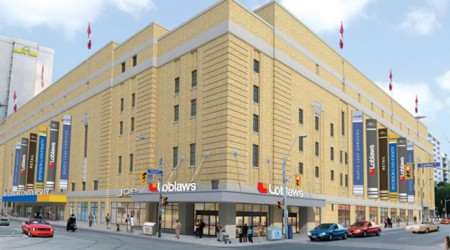 The intersection between digital, social and physical experiences.
The intersection between digital, social and physical experiences.
It’s hard to go anywhere these days and not see a digital screen. Big screens and little screens are quickly becoming embedded in every aspect of our daily lives. Next time you travel to work just count the number of screens (e.g. digital billboards, smartphones) you see and/or interact with. I counted 120 the other day.
But, my question is: how useful, intuitive and easy is it to use all of these screens? And, do they add value? I recently had two very different experiences that illustrate how digital screens can add value, and how they sometimes don’t. One was a visit to my doctor’s office and the other was a trip to the Royal Ontario Museum (ROM).
Two very different experiences
1. While watching my young doctor use his new e-patient system it was painfully clear to me that the web-based system was not intuitive. At one point the doctor turned to me and said, “I wish this had been designed with a human being in mind, it takes eight steps to print and I do this 50 times a day, what a time waster.”
2. Earlier this year the ROM introduced an exhibit called Ultimate Dinosaurs, which includes several new augmented reality experiences. As I watched people, adults and kids alike, interact with the application on a recent trip to the museum it was clear they were having a great experience. Smiling faces and laughing children are always a good sign.
These are two very different experiences. In the first instance, the digital technology is geared to helping doctors improve their day-to-day workflow and in the second, augmented reality technology is intended to create an educational experience. However, both share one common element, people. It’s pretty clear which one of these digital experiences was designed with people in mind.
Value-added digital experiences
Last year we had the pleasure to work on the Maple Leaf Gardens project with Ryerson University. Our task: find ways to integrate digital technology into the physical space to highlight the heritage of a Canadian landmark building.
One of the most interesting aspects of the project was working with the architectural firm BBB Architects. They painted a picture of the new venue and helped us better understand how people would flow throughout the building. Their understanding of how people interact with physical spaces was very important to understanding how to create the right digital experiences.
Once we had a good understanding of the who it was easy to think through the what and to create useful, playful and easy to use digital experiences like The Heritage Hotspot: spots throughout the building that have historic importance. For example, stop by the spot where the Beatles first played in the Gardens and download a free Beatles song or check out an augmented reality experience at the old centre ice that brings back memories of the Toronto Maple Leafs’ glory days.
Understanding people first
To help us better understand how people interact with digital technologies we have access to powerful tools and databases, like AskingCanadians. We also use observation methods to better connect and empathize with the end customer. But, I would also recommend leveraging other experts, like architects, who have years of experience designing for people.
Whatever customer insight methods you use, always remember to design digital experiences with people at the centre.